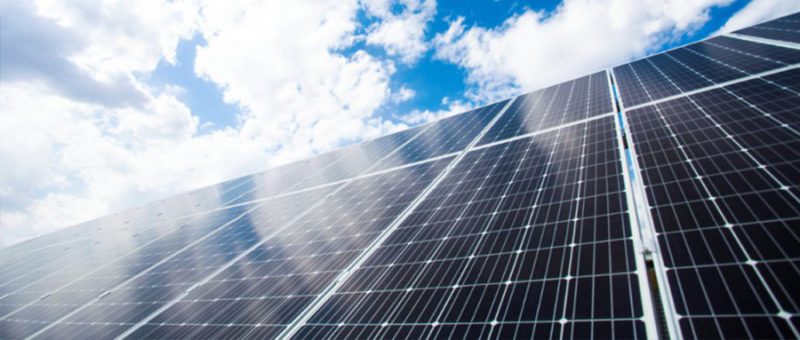PVTIME – The sun’s energy has been harnessed in a variety of ingenious ways by humans. The photovoltaic power industry is playing a significant role in energy supply across the world. The energy supply is transforming from fossil fuels to clean energy at a rapid pace, and solar power will be a crucial part of the world’s energy consumption in the near future.
Although many solar power companies faced challenges during 2023, the deployment of solar systems continued. In 2023, global renewable capacity additions reached a significant milestone, increasing by almost 50% to nearly 510GW. This growth rate is the fastest in the last two decades and, as the IEA notes, was driven by China. China’s acceleration was exceptional, with 216.88GW of new solar capacity added in 2023, more than the entire world added in 2022.

Why are the Chinese PV companies seemingly able to maintain their forward momentum, while other solar energy providers are shifting their strategies, such as halting financing or closing their production bases? What development strategy are they employing?
The first strategy is to increase capacity and reduce costs. Chint is a good example of this approach. Despite the challenges of 2022 and 2023, the company’s stable and steady development with 11 production bases helped it to weather the storm.
By the end of 2022, Chint was not a dominant player in the global module industry, with production capacity of 13GW of solar cells and 20GW of modules. At that time, the top players in the industry, such as JA Solar, LONGi, Tongwei, Canadian Solar, JinkoSolar and Qcells, produced significantly more solar products than Chint. In 2023, Chint expanded its n-type TOPCon cell production from five to ten production bases. This resulted in a significant increase in production capacity for solar cells, reaching 53GW, and modules, reaching 55GW.
Similarly, Tongwei experienced a significant expansion in 2022, increasing its solar module production capacity from 14GW to 80GW in 2023. The company focused on n-type solar cells, including its self-developed TNC (Tongwei N-passivated contact cell). Meanwhile, Tongwei launched its integrated manufacturing plan, leveraging its advantages in silicon material production.
They are not pursuing an expansion strategy that is solely reactive to market conditions, but rather, they have developed a strategy that is aligned with their unique strengths and capabilities.
Tongwei’s enhanced production capacity has propelled it to the top position. Tongwei’s integrated production bases provide a secure supply chain for raw materials, and have enabled the company to produce a vast amount of solar modules and cells at low cost and with fast delivery. Furthermore, its R&D capabilities enable it to produce solar cells with high efficiency and reliable performance. Tongwei’s Terra modules have been awarded the carbon footprint certificate by Certisolis, a French authority, while its self-developed TNC cells have been recognised as one of the top ten innovative technologies in 2022. Tongwei has secured a number of high-value orders from a vast array of bidding projects. The expansion of the project represents a virtuous circle.
Chint has established manufacturing bases with extensive use of automation technology, which has led to improved productivity and reduced production costs. The rationale behind Chint’s strategic layout is based on a number of key considerations. Firstly, to provide customers with a fast and efficient service. The closer proximity of the base to its component customers allows for a faster and more effective response to customers, both in terms of speed of delivery and at the level of after-sales service. Furthermore, the proximity of some of the bases to one another offers a competitive advantage in terms of supply chain costs. Thirdly, Chint’s bases in close proximity to ports offer convenient geographical advantages and lower transport costs.
For the core products, Chint choose TOPCon cells super carefully. In 2021, Chint began its research and development on TOPCon technology, and its expansion was initiated once its first mass production line was completed in July 2022.
For its core products, Chint has chosen TOPCon cells with great care. In 2021, Chint began its research and development on TOPCon technology, and its expansion was initiated once its first mass production line was completed in July 2022.
TOPCon solar cells are seen as the most promising next generation of mainstream solar cell technology to replace PERC cells, with higher efficiency potential and stability as PERC cells approach their peak efficiency.
Chint was one of the pioneering companies to shift its focus from PERC to TOPCon solar cells and to expand TOPCon manufacturing projects across the country at that time. This was after LONGi, a leading PV company and industry benchmark, announced its intention to launch TOPCon production projects in Xixian City and Ningxia City. China has production capacity of 15GW and 5GW, respectively, marking the first mass production plan of TOPCon in China. Jolywood, a leading Chinese manufacturer of n-type bifacial modules using TOPCon technology, has announced plans to build a 16GW TOPCon production line. Subsequently, several Chint production bases were established in a short period of time, positioning Chint as one of the first PV companies to deploy advanced TOPCon capacity on a large scale.
Currently, Chint’s 11th production base is under construction in Turkey. Strategically located near the Black Sea in the north and the Mediterranean Sea in the south, the facility will serve as a central hub for Asia, Europe and Africa. The processing equipment has already been installed on-site, with the production base scheduled for completion in the near future. Upon completion, Chint’s solar products will be delivered to Europe, Africa, the Middle East, and even the Americas, establishing Chint’s global market presence in a structured and orderly manner.
A number of Chinese PV manufacturers, including JinkoSolar, Trina Solar, JA Solar, TW Solar, DAS Solar, GCLSI, Astronergy (Chint), Drinda, Suntech, Mubang High-Tech, EGING PV (Keenstar), and Royal Group, are investing in TOPCon. TOPCon products were the market leaders in 2023, particularly those with back-contact technology. The total output volume in China is estimated to be 105 to 115GW in 2023, according to Professor Shen Wenzhong, director of the Solar Energy Research Institute at Shanghai Jiao Tong University. Furthermore, TOPCon products reached a production capacity of 433GW in China in 2023, comprising 327.5GW of cells and 105.5GW of modules.
Although many experts viewed TOPCon as a temperate product, manufacturers have chosen it for commercial purposes. For instance, Trina Solar has revealed that TOPCon will be preferred to other solar cells for the next 2-3 years to extend the life of production lines. Jinko Solar anticipates that TOPCon will become the leading passivated cell technology in the next 4-5 years. It offers the best combination of efficiency and reliability in terms of cost and ease of upgrading production lines. The potential for innovative technology to enhance TOPCon’s position is likely to be a long-term benefit.
At the SNEC Solar Expo 2024, Chint unveiled a TOPCon solar module with ZBB (Zero-BusBar) technology. This particular module, with a size less than 2 square metres, is aesthetically pleasing with an all-black appearance suitable for domestic applications. The main busbar is removed, leaving the fine grid to collect current for the module, which achieves high performance and appearance. Fewer and finer welding wires, and an increased number of contact points, result in a carrier collection efficiency inside the cell that is significantly improved, increasing the efficiency and power of the module. Meanwhile, the risk of hidden cracks for the module is decreased by these extremely thin wires and increased number of contact points, when it encounters external forces.
Currently, Chint is the sole PV company to have achieved mass production of TOPCon cells with ZBB technology, with a capacity of 7GW per year. Furthermore, production lines are operating at full capacity due to a high demand exceeding supply. This is a result of customer preference. These black, double-glazed, high-value solar cells are primarily destined for the European market. To meet the growing demand, the capacity is expected to be expanded to nearly 20GW by the end of 2024. In addition, the ZBB technology will be introduced to other solar products. As a result, Chint will maintain its leading position in solar cell and module manufacturing with relatively low costs due to its ZBB technology. The TOPCon products with ZBB technology use a lower amount of silver, which is beneficial for Chint in terms of controlling its costs. This innovative technology and large production volume have enabled Chint to become a leading solar cell and module provider, while other companies have been adversely affected by the high price of silver and low profits from manufacturing cells or modules. Cost control is a crucial factor for all PV players in order to achieve sustainable development. Chint is confident in its ability to maintain control of costs.
Similarly, the leading solar manufacturers must prepare for future developments with a range of innovative products. TOPCon is not the only high-performing product in China. While TOPCon technology is developing rapidly, the growth of HJT, XBC and perovskite products is also accelerating. It is estimated that China achieved approximately 50GW of production capacity and 10GW of module output for HJT by 2023. In 2023, IBC-related technology, led by LONGi and Aiko Solar in China, reached 10GW of module shipments. PERC, which held a market share of approximately 60% in 2023, is gradually being replaced by these products, with its market share estimated to be less than 30% in 2024. Moreover, the production capacity for perovskite was nearly 5.5GW.
The PV giant LONGi, who has a strong R&D team and significant investment in research and development, is engaging in a range of advanced technologies, including XBC and perovskite. HPBC, a p-type IBC, positions as its core technology for the next generation. LONGi ramps up production of a 30GW HPBC project in Xi’an City, China, and has set up another 4GW of HPBC in Taizhou City, China, for the distributed PV market. LONGi reports that its HBC cell achieved a conversion efficiency of 27.3% in laboratory testing in May 2024. The new HPBC module, Hi-MO 9, reached 24.42% efficiency in mass production. In July 2024, the company achieved a world record of 34.6% conversion efficiency with its silicon perovskite tandem cells.
Chint has been engaged in the development of new products since 2022, yet it is adopting a cautious approach to investing in research and development of next-generation products and cutting-edge technologies. The pilot line for perovskite products was completed in June 2024 and will be upgraded in 2025. Meanwhile, ZBC cells are being produced from pilot lines, with further research and investment planned.
It is likely that competition among solar cell producers will continue. Comparative studies of various solar cell and technologies are currently being conducted. It is important to note that products that are popular may not be optimal for all customers. Professor Shen Wenzhong, the head of the Solar Energy Research Institute at Shanghai Jiao Tong University, expressed his personal enthusiasm for HJT products during a ceremony held by LONGi for BC products. In an ideal scenario, two or more mainstream technologies could coexist in the future, requiring the cooperation of researchers and producers. The diverse needs of clients will necessitate the availability of a range of technologies and products. There is still significant scope for further innovation in solar cells and systems.

Scan the QR code to follow PVTIME official account on Wechat for latest news on PV+ES










